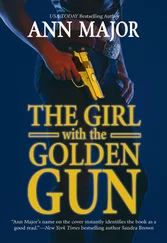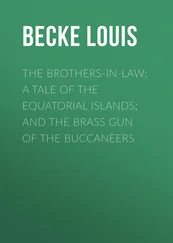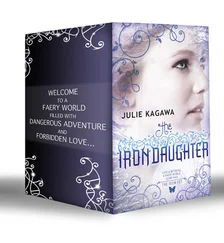From 1969 through 1970, WerBell and Ingram took the military version of their machine pistol on the road, demonstrating it to U.S. authorities at Forts Benning, Gordon, and Belvoi and at the Quantico Marine Base. (Historian Nelson notes that military policemen at Fort Gordon even fired Ingram’s pistol on full-auto underwater in the base swimming pool.)
The gun attracted enough interest to convince a group of New York investors that it might replace the standard .45 pistol as the military sidearm of choice. The investors, acting as Quantum Corp., renamed the company Military Armament Corp. from which the acronym MAC derives. It was not a match made in heaven. Within a year Quantum had ousted WerBell and Ingram from their jobs as manager and chief engineer. Conflict between the investors and the founders grew; the company suffered production delays and had difficulty raising money.
About the only good news was a welcome burst of free publicity from none other than John Wayne himself, in his starring role as Lon McQ in McQ , a 1974 movie about a tough Seattle police detective who sets out to solve the murder of a colleague, only to discover the colleague was involved with a notorious drug ring. It was McQ , according to ATF officials, that put the Ingram in the public eye and made it the gun most favored by America’s drug gangs—although ironically the bad guys in the movie used only revolvers and shotguns, mere toys compared to the arsenals deployed by today’s drug cartels.
The company could not have hoped for a better advertisement. At one point big Lon McQ visits the shop of a gun dealer he knows. The screenwriter wasted little energy on subtlety in introducing the weapon.
“Hey, Lon,” the dealer says, “what are you doing?”
McQ offers a wry grin. “Buyin’ a gun.”
“Got a minute? I got somethin’ I want to show you out back.”
McQ lumbers after him into the back room of the gun shop where a small shooting range is conveniently equipped with a water-filled garbage can raised on two sawhorses.
“Lon,” the dealer says, “I have a little equalizer here. We’re going to try to sell it to the department.” He holds up the gun. With an unmistakable touch of reverence, he says, “The Ingram.”
“The Ingram, huh?”
“Nine millimeter,” adds a gunsmith seated nearby. For some reason the gunsmith is wearing a white lab coat, about as alien to most gun shops as an autographed photo of James Brady.
McQ hefts the gun. “Six or seven pounds?”
“Six point two five,” the gunsmith says. He screws on a silencer. “Silencer makes a good handle.”
“Lon,” the dealer says, “this can here is filled with water. Go on. Squeeze off a burst.”
“Why not?” McQ says.
McQ blasts away, filling the can full of holes as water spurts from all sides. The camera cuts to McQ’s face and an expression that comes as close to awe as John Wayne could muster.
McQ looks down at the gun. He looks back at the pail.
“How about that?” the dealer says. “Those thirty-two slugs came out in a second and a half.”
Ruggedly, slowly, McQ says, “Yeah.”
“You ever see anything like it?” the dealer asks.
McQ, who by now has quit the police force in order to work the case more efficiently, walks off with the gun without paying a penny or signing a single document. (Doing so anywhere but in a movie would constitute an immediate felony.) He uses it later to mow down a band of dope dealers and grind their car to steel mulch. Afterward, of course, he gets his badge back from a grateful department. True to the traditions of cinematic gunplay, no one asks about the gun or the corpses strewn over a Pacific beach.
Just in case anyone in the audience had any doubt about where to buy this wondrous weapon, Warner Brothers provided a fullscreen credit that read, “Special Weapon: Military Armament Corp.”
This enthusiastic bit of advertising wasn’t enough to save the company, however. Military Armament Corp. filed for Chapter 11 protection under federal bankruptcy laws in mid-1975, without ever having produced a semiautomatic Ingram for the general consumer. The remains of the company, including ten thousand submachine guns and two thousand silencers, were sold at auction, most to a group of investors who had formed another Atlanta company called RPB Industries Inc. They too planned to bring Ingram’s weapons to full-scale commercial production, but in 1978 sold out to yet another group of investors, this one headed by Wayne Daniel, the son of a Georgia minister.
♦ ♦ ♦
Under Wayne Daniel, RPB had more success selling the Ingram line and by mid-1979 had made sales of varying amounts to some twenty countries, including seven Latin American nations, the United Kingdom, Saudia Arabia, and Israel. An operating manual for the RPB version of the Ingram M10 came in a camouflage cover and, on its first page, noted how “the compact size of the M10 makes it especially suitable for tank crews, gun and mortar crews, etc.” The manual also displayed a range of available accessories, including the RPB “Operational Briefcase,” an attaché case packed with a silenced M10 that could be fired with the gun still in the case. A business card inserted in a card holder on the side of the case obscured the muzzle.
“Looks like an ordinary briefcase with your calling card in front,” the manual reads. “However, this case contains the world’s deadliest submachine gun, ready for action.” The blurb noted that anyone who bought the briefcase would have to register it with ATF, which had classed it as an “assassination device.”
Under Wayne Daniel and his partners, the new RPB faced an array of business obstacles not typically included in the syllabi at Harvard Business School. One partner was convicted of bribing a prosecutor to drop a client’s drug charge. Two others, Robert Morgan and John “Jack” Leibolt, got involved in the narcotics smuggling operations of Pablo Escobar-Gaviria and the Medellín Cartel. Morgan was convicted in 1979 for smuggling two tons of marijuana into Florida and was sentenced to thirty years in prison. Leibolt, according to a sweeping 1989 indictment of the Medellín Cartel, once piloted a plane for the cartel and, in September 1979, supplied the group with six silencer-equipped machine guns. (He pleaded guilty in August of 1990 to conspiracy to import cocaine.)
Despite all this, RPB succeeded in at last transforming the Ingram from a limited-circulation military weapon into a semiautomatic handgun for general use. Previously, the company had been restricted to selling its full-auto Ingram variations only through dealers specially licensed to sell machine guns, who in turn—if they followed the law—sold them only to buyers who had undergone an ATF background investigation and paid $200 for the necessary tax stamp. Now, however, any adult with a clean record could buy an Ingram look-alike, even a mock silencer to go with it. “It became available everywhere,” said Earl Taylor, a twenty-one-year ATF veteran who retired to become a vice president with Norred & Associates, an Atlanta security concern that as of 1992 counted among its varied assignments the protection of Kroger supermarkets and ex-colonel Oliver North. “All gun shops everywhere were selling it. Everywhere. The distribution of it became widespread.”
Taylor is a tall, lean man whose courtly manner and slow, easy way of speaking suggest quiet authority. Over the years he came to know RPB and its successor, S.W. Daniel, intimately, first as resident agent-in-charge of ATF’s Rome, Georgia, office, later as supervisor of criminal investigation in the agency’s Atlanta office. He deployed undercover agents to order the guns from illegal suppliers. Demand was so high, they had to wait for delivery, Taylor recalled. “It was a hot item.”
Читать дальше
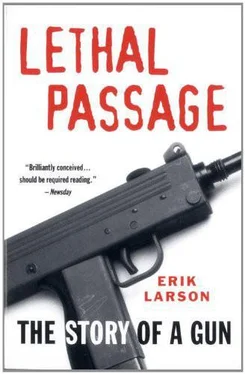
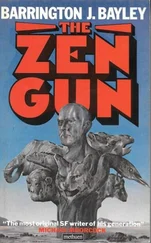
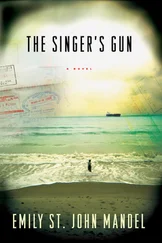

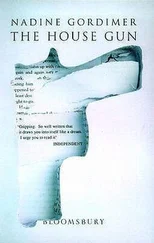

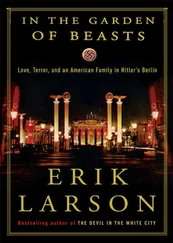

![Ричард Деминг - Whistle Past the Graveyard [= Give the Girl a Gun]](/books/412176/richard-deming-whistle-past-the-graveyard-give-t-thumb.webp)
